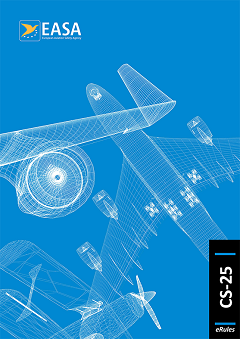ED Decision 2003/2/RM
(a) Flight load factors represent the ratio of the aerodynamic force component (acting normal to the assumed longitudinal axis of the aeroplane) to the weight of the aeroplane. A positive load factor is one in which the aerodynamic force acts upward with respect to the aeroplane.
(b) Considering compressibility effects at each speed, compliance with the flight load requirements of this Subpart must be shown –
(1) At each critical altitude within the range of altitudes selected by the applicant;
(2) At each weight from the design minimum weight to the design maximum weight appropriate to each particular flight load condition; and
(3) For each required altitude and weight, for any practicable distribution of disposable load within the operating limitations recorded in the Aeroplane Flight Manual.
(c) Enough points on and within the boundaries of the design envelope must be investigated to ensure that the maximum load for each part of the aeroplane structure is obtained.
(d) The significant forces acting on the aeroplane must be placed in equilibrium in a rational or conservative manner. The linear inertia forces must be considered in equilibrium with the thrust and all aerodynamic loads, while the angular (pitching) inertia forces must be considered in equilibrium with thrust and all aerodynamic moments, including moments due to loads on components such as tail surfaces and nacelles. Critical thrust values in the range from zero to maximum continuous thrust must be considered.
